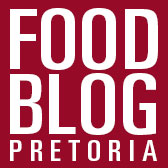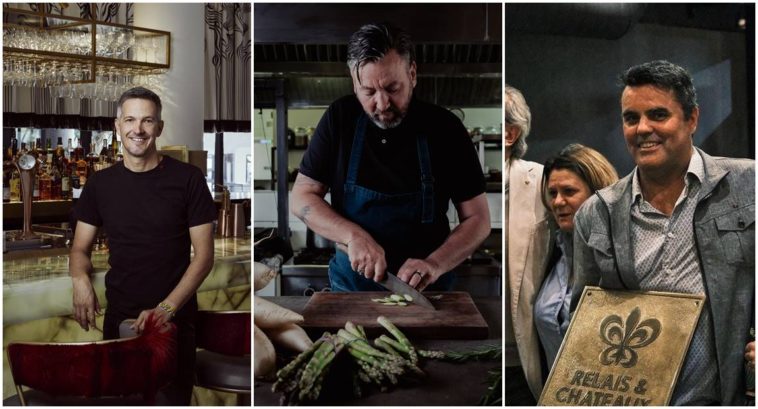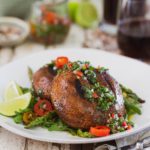Are tasting menus the be-all and end-all of fine dining? Or is there a place for à la carte in our high-end restaurants?
Diners have more choice than ever before in our South African restaurants, from multi-course, theatrical tasting menus (be it the full food journey or a reduced chef’s menu), to perfectly curated seasonal à la carte dining. How do you choose what to opt for as a restaurant enthusiast and foodie, and how does a chef decide on a menu offering for a new restaurant? We put the question to three of South Africa’s best-known chefs to get their take on this topic.
In praise of tasting menus
Eat Out S.Pellegrino & Acqua Panna Chef of the Year 2019, Bertus Basson, has a food philosophy rooted in traditional South African food culture and an impressive stable of restaurants in Stellenbosch and the Winelands, which range from fine dining establishments to casual eateries.
“From the practical perspective I like tasting menus with a small amount of choice,” Bertus says. His tasting menus at Eike, Chorus, and Clara’s Barn offer a choice of two dishes when it comes to the mains. “It gives enough scope to choose but it allows us to run the restaurant in a much more focussed way. Instead of putting the energy into choices, we put our energy into finding better produce, and running the restaurant a little bit leaner. It’s also fresher. When the guests come in, they’ll have a wonderful experience.”
Freshness is key and tasting menus allow you to be in control of that. “If you travel through the Karoo, which I do a lot because I really like the Karoo,” he says, “and you rock up in a small town and there’s a big menu with 10 starters and 10 main courses, nothing is going to be fresh. If there’s no menu and they say, ‘You’ll eat what we’re going to feed you’, I’m really happy with that. You eat from the region; you eat what’s fresh.”
Tasting menus allow you to source more sustainably and can encompass a broader range of ingredients, Bertus says. “For example, we can’t always buy enough of one species of fresh fish to get through a whole day. So, I might get a bit of Cape salmon or yellowtail and supplement that with fresh hake. I’d serve fresh harder (grey mullet) or mackerel, any time over kingklip, it’s more delicious, more sustainable.”
And you can include dishes that guests might be hesitant to order on an à la carte menu. “We’ve got to make space for lesser-known ingredients, to challenge the dining public a little bit more and you can do that on a tasting menu. A pork rump is a wonderful cut of lamb kidney. You can’t fill a menu with offal, but you can expose people to a few new things, and South African people are quite adventurous.”
He feels that there is a place for à la carte menus, such as in family restaurants, your local Italian, or a steakhouse, “but in fine restaurants I think people should learn to trust the chef. It’s all about the experience.”
Bertus’ conclusion, “The tasting menu works like a bomb. It makes the industry more sustainable, the team gets to focus on the right places, and the team works fewer hours. It’s a win-win in restaurants like mine.”
Going above and beyond – there’s a place for both
Recently returned from the World’s 50 Best awards sponsored by S.Pellegrino & Acqua Panna in Valencia, where his Cape Town restaurant FYN was presented with the prestigious Flor de Caña Sustainable Restaurant Award for 2023, Peter Tempelhoff says there’s a place for both à la carte and tasting menus in fine dining.
“Tasting menus give you a far easier way to curate an experience for somebody. Here at FYN we want to tell our story through our food. There’s no better way to tell a story than to guide someone through what you want them to experience.”
Sustainability is also a big factor, “We know exactly how many guests are dining with us, we know exactly how much of each course we need. It’s far more sustainable to have exactly the food you need for the night, as opposed to over-prepping on stuff. So, it’s a more efficient way of running a business with zero wastage.”
But it all depends on your dining audience, Peter says. He has taken the à la carte route at his Constantia wine farm restaurant, Beyond, at Buitenverwachting. “There we want families to be able to come without feeling like they must sit through six courses. The style of the restaurant dictates the type of menu you run. I wouldn’t want to take my kids to eat a tasting menu, I don’t want to prescribe to them.” They do however offer a tasting menu format at Beyond for those who prefer this option.
The team puts just as much attention to detail and seasonality into the à la carte menu as they would on a tasting menu. Peter describes a beef dish on the current Beyond winter menu served with four different styles of carrots – smoked, puree, hasselback, and furikake. “We really try and focus on an ingredient and make the most of each.” Inevitably there will be over-prepping so that you don’t run out of a dish, but wastage can be minimised with good management. Leftover carrots from one day can go into the stock for the next.
For him, it’s really down to individual preference. “You get different diners. Some people prefer not to have a choice, they are there for the experience. They come to FYN and say ‘Great, tasting menu, go for it. I’m in your hands, I trust you. I’ll eat whatever you put in front of me.’ Whereas the ones who go to Beyond want to choose whatever they feel like that day… it’s a different mindset. We’re completely diner driven. I have to make sure the people I’m feeding get what they want.”
His final words, “I like both menu styles, don’t make me choose!”
À la carte all the way
A seasoned S.Pellegrino Young Chef Academy member, (he was mentor and juror in the 2015 Africa & Middle East regional event, then part of the global jury panel as one of the Seven Sages in the 2016 Grand Finale in Italy), chef and restaurateur David Higgs is a stalwart of the Johannesburg restaurant scene (plus he’s opening matches your mood in Cape Town later this year). He is unequivocally in favour of the à la carte approach for his restaurants.
“In the Joburg scene, I don’t think people want to be told what to eat or confined or limited. They would rather eat fewer courses of bigger plates than 5-12 courses of smaller plates. A large part of that is perceived value for money. It’s expensive to eat out, money is hard to come by, so you make sure there’s value and people can see the value.”
And he says Joburg diners are looking for a more informal dining experience, “A tasting menu can become quite laborious. It’s stop-start all the time. The waiter brings a dish. The sommelier comes to talk. And it happens again with each course. It breaks conversation. People aren’t there for a performance; they’ve been confined in the workspace all day and they just want to let loose. There is obviously still a place for tasting menus, but I think there’s a movement away from it, especially in this city.”
It also has to do with the style and size of the restaurant. He’s usually doing around 300 covers a night at Marble and an intricate multi-course menu at that scale, he says, can be hit and miss. “As a large format restaurant what we strive for is to perform at the highest level possible. We push the food, the service, everything to the highest level that we can keep consistent.”
An à la carte menu is the best way to achieve that for him, plus it allows the diner experience to be luxurious but less formal. “It’s fun, it’s about letting your hair down. Marble is really about the fires – when you have a fire people congregate, they walk in, go straight up to the fire and start chatting before they sit down.” It’s become more about the all-round experience now, than just focusing on food and wine, he says. “Music has become a massive part, the acoustics, the luxury of the bar where you have a drink and relax before going through to your table. Around the world, there’s a movement to more of a vibe, better energy. It’s beautiful dining, massive luxury, but not overly complicated, just really good quality.”
So having spoken to the chefs, we have three different perspectives and no winner in the tasting menu vs. à la carte debate, but many good reasons to continue eating out and to experience a good meal whichever menu matches your mood and suits your dining style.



